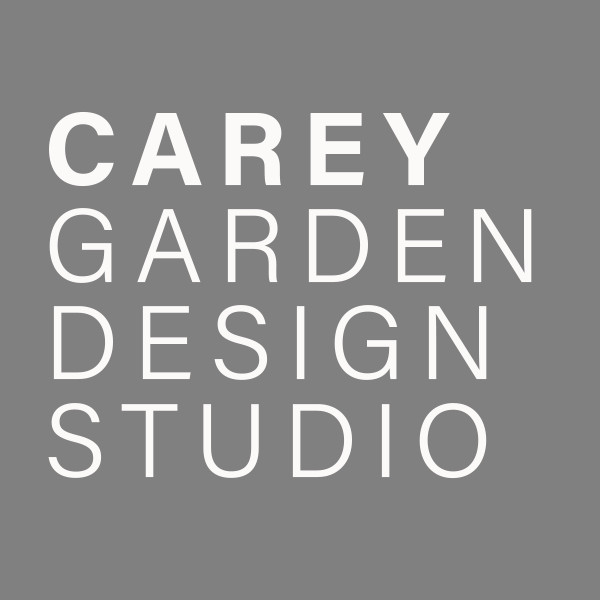The Beginner’s Guide to designing your garden
Even if you can’t afford to get the pros in, here are some fundamental things to think about before doing anything to your garden.
There is so much I could say, in fact this is certainly not a topic that lends itself to a a quick ‘how-to’ guide. A garden cannot be rushed, nor can the decisions that impact it. This is why our process takes well over a year in total, with many many conversations throughout.
However, if you have a garden, and you want to improve it yourself - there are some very basic things you can do. Here are our top 3 tips for getting a lot more from your space.
WHERE IS THE SWEET SPOT?
Firstly, think about how you already use your garden. Do you find yourself always sitting in the same area, or avoiding other spaces? No matter how big your garden is, it will have a ‘sweet spot’. You may be blessed with many! This is an area in your garden where you find yourself drawn to simply being. For now, think of this as very much a human endeavour (we will get to the plants in a minute). As a human, which I assume you are, where is a good place to be in your garden? Take a walk around and see if you can find the sweet spot.
Now think about why this is.
Is it the light?
Is it the view?
Is it a sense of enclosure?
Or a perhaps a space that’s large enough for an activity
(such as dining with friends, or sunbathing).Is it near something you like?
Is it peaceful?
Whatever the reason - if you like this space, it is well worth taking note of that. This could be the pivotal area in your garden from which you choose to design everything else around. You may surprise yourself. If the best area, with the best light, at the right time of day, with space to stretch out without feeling overlooked - is also where you have your compost bin or washing line - then maybe its time to reclaim that space for you.
This is why we spend so much time with clients really understanding their vision (not just the tick-list of wants and needs). Our process allows us to dig deeper, and look beyond where the practical elements need to be.
STOP SHOPPING
Ok. This tip isn’t for everyone. However, many of us love our gardens and we spend a small fortune (without knowing) in an attempt to improve it. Usually, as spring starts to appear, and the TV ads are all about spending the summer outside - we rush to the garden centre and fill our boots with things that promise to give the garden the face-lift it needs. This particularly applies to plants, and yes, I’m hinting at the ancient advice of ‘right plant, right place’.
However, the reasons behind why something should grow in your garden, should go beyond simply whether or not it will live. The same applies to furniture, materials, lighting, water features and anything that may form part of your ideal garden.
Without a clear plan, not only can we spend money we don’t need to - we can also end up with a very confused end-product.
I’d like us to think for a minute about how the ‘spring sale’ approach would work if we applied it to other areas of our lives. Imagine cooking a meal, or following a recipe - only to add some things that are also on offer even if they’re not part of the plan. Or perhaps imagine buying a new bookcase, and a couple of rugs without really any plan (or measurements) as to where they might go?
It is very easy to buy things that look nice - with no real strategy. I often wonder if we totalled up the value of the items we’ve bought over the years, if it would have been more cost effective to step back, make a plan and then spend time really looking for the right things.
Know your soil (get it tested) and understand which areas of the garden are best for which types of plants. Then narrow things down to a colour scheme or atmosphere. Think carefully about how these colours might work with what’s already in the garden. Then create a list of ‘rules’ and try to stick to them. If you can’t find what you want at first - keep looking. Create for yourself some limitations, and the garden will thank you by looking sophisticated and cared for.
These limitations might not be simply aesthetic of course. You could be looking to create a pollinator haven, or a productive authentic allotment garden. You make the rules - but you also stick to them.
BE BRAVE WITH THOSE BOARDERS
This sort of links to the sweet spot tip - only this time we’re arguing the case for the plants in the garden (and there should be some!). It might just be that your best planting spaces are not up against a fence and pushed to the outer perimeter of your space. In fact, although this is many people’s default when it comes to planting design - it is incredibly liberating to think about bringing the planting in to join the party.
Garden edges (or boarders), with their fences and boundary hedges, aren’t always the best places for beautiful boarders. They can be self-shading and create dry pockets with tricky corners. Planting should feel as though it is a part of the garden - and not simply a picture frame around the outside. Don’t be afraid of feature trees - even if you have a small garden! Allow yourself a journey that takes you through some planting. You can play with scent and texture here too.
Consider this: if you have lots of pots in a certain area, and you find yourself trying to create a sense of greenery - then perhaps its time to make a permanent space in the ground (even if that means some serious digging). Of course, some plants are happy to be in a pot - but more often that not, a plant will thank you for letting it live in contact with the ground.
At this point, I stray into trying to give exact examples of ‘things that work’ in gardens. The truth is, the solution will be a very bespoke and personal response to your garden. This is what we live and breathe - so if you’re feeling inspired, but overwhelmed, why not get in touch and see if we can help.


